AMA Vertical Tasting
Domaine de Chevalier
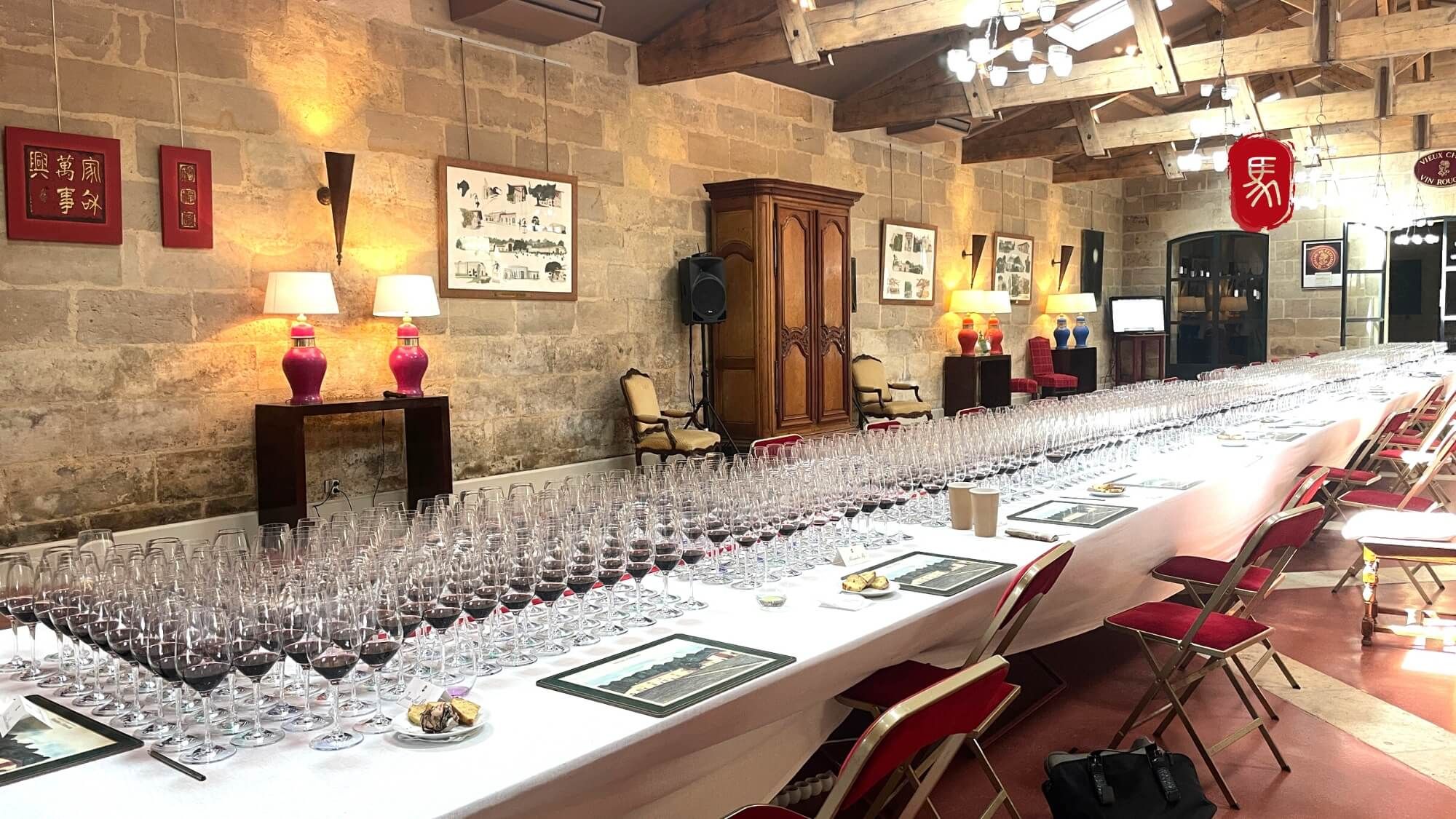
At the beginning of the year, my old friend Olivier Bernard told me: This year marks his 40th year managing Chevalier, and he would organize an unprecedented celebration.
In early July, I received an email marked with a mysterious little red star. When I opened it, I was shocked! It turns out the “Unprecedented Celebration” was an almost half-century vertical tasting!!
Unlike previous vertical tastings, Olivier not only invited renowned wine critics from around the world but also extended invitations to several “World’s Best Sommeliers.” Each person had 40 glasses set in front of them, arranged closely together, spanning over 20 meters long. The scene was quite spectacular, and even though I’ve attended many vertical tastings before, I was still astounded by the grandeur of this setup.
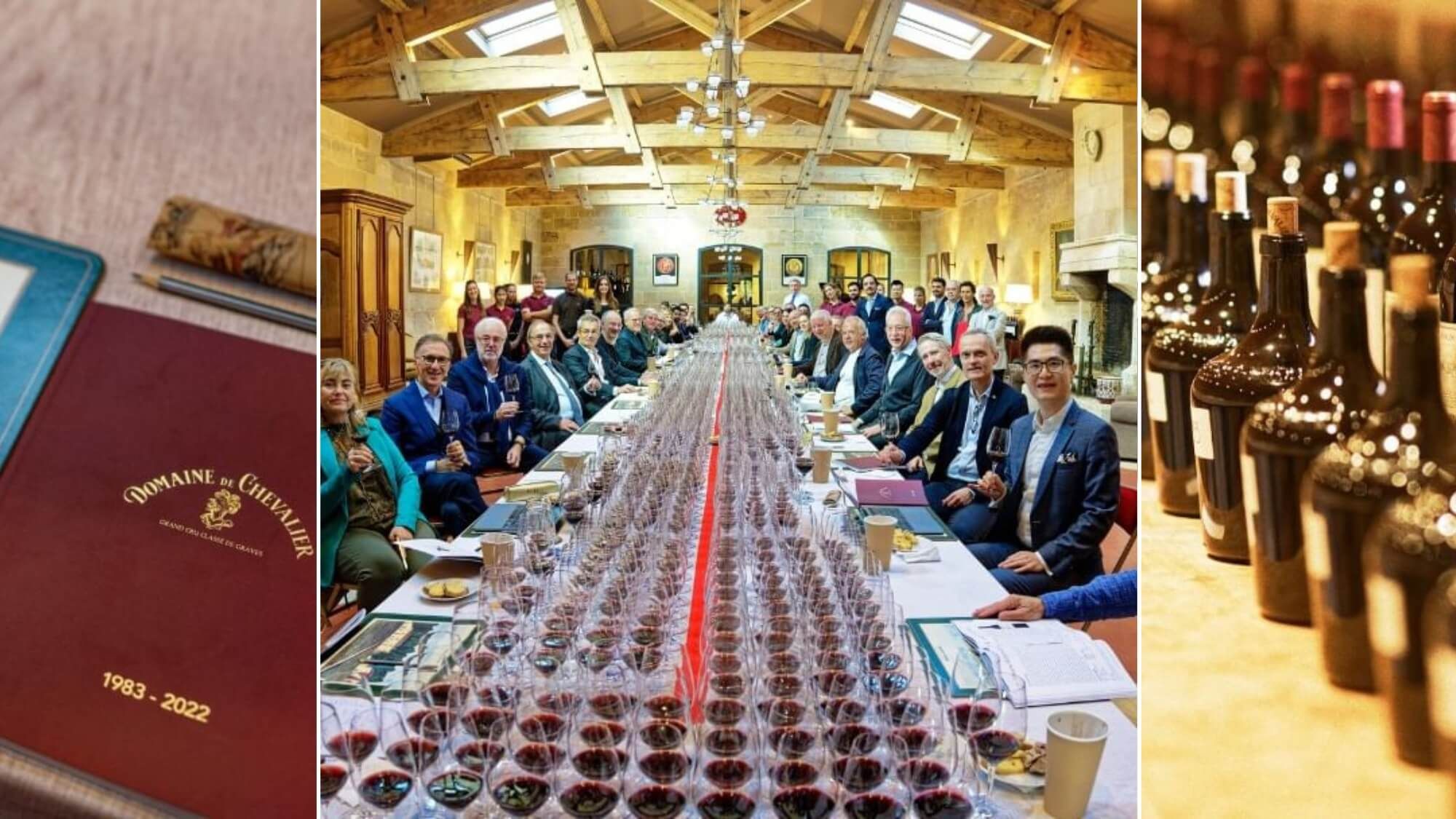
It was only during the tasting that I learned, in the 158 years since 1865, Chevalier has had only four owners, each serving for over 35 years. This kind of “lifetime commitment” to a vineyard is rare in Bordeaux, especially among the Premium Cru Classé. I joked with Olivier that he could become the longest owner in Chevalier’s history before he retires. He humorously pointed to the 2022 wine label and made a horse-riding gesture (symbolizing an unending run…), making everyone laugh.
Indeed, this is the spirit Chevalier wants to convey: calm yet resilient, seemingly delicate but profoundly enduring.
Terroir Chapter
- Black Sandy Gravel Soil
Generally speaking, the higher the sand content in the soil, the softer the body is. However, Chevalier, which also has sandy soil, is completely different. Its red wines indeed have the soft character of sandy soils, but they also possess a greater structure and more complex depth. In my view, the secret lies in the word “black.”
The vineyards of Chevalier were originally a forest, where a large number of leaves would fall to the ground every autumn. These leaves decompose into the soil and then seep deeper with the rainwater. Over the years, organic matter accumulates underground, turning the surrounding soil black, commonly known as “black sandy gravel soil.”
Compared to regular sandy gravel soil, “Black sandy gravel soil,” which contains more organic matter, has better water retention. It can effectively avoid water shortage during hot and dry weather while providing sufficient nutrients. Because of this, Chevalier’s vines develop thicker grape skins and a richer taste compared to those grown in typical sandy gravel soil.
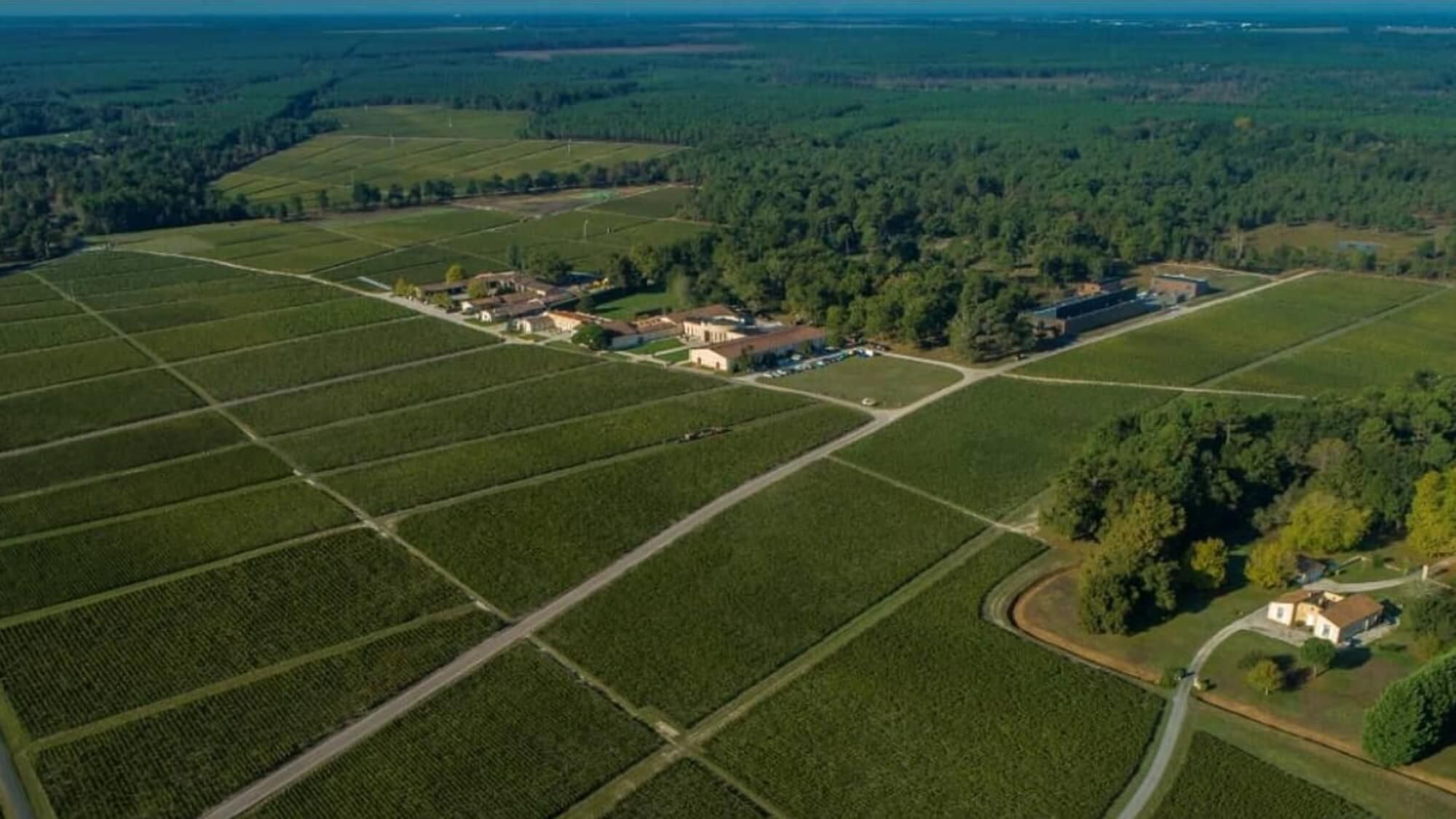
- The Vineyard Hidden in the Forest
Many people overlook an element when talking about the terroir of Domaine de Chevalier: the forest surrounding the vineyards. In my opinion, these woods are the “secret” of Domaine de Chevalier and a key component of its vineyard’s terroir. Earlier, when introducing “Black sandy gravel soil,” I only mentioned the leaves. Now, I want you to focus on the forest itself.
Firstly, vineyards nestled within forests are somewhat isolated, which acts as a natural barrier to downy mildew.
Secondly, forests can offer some protection against strong winds. If there’s stormy weather during the flowering period, it can reduce coulure to a certain extent.
Lastly, in a relatively enclosed environment, the warm air near the ground doesn’t move away easily, which can indirectly promote grape maturation.
However, every advantage has its downside. In a more enclosed environment, during spring frosts, the situation can be challenging. Because the air doesn’t circulate well, cold air can quickly descend and accumulate, leading to more severe frost damage. To address this, Olivier built frost prevention towers when he took over the vineyard and has continued to upgrade them over the past 40 years.
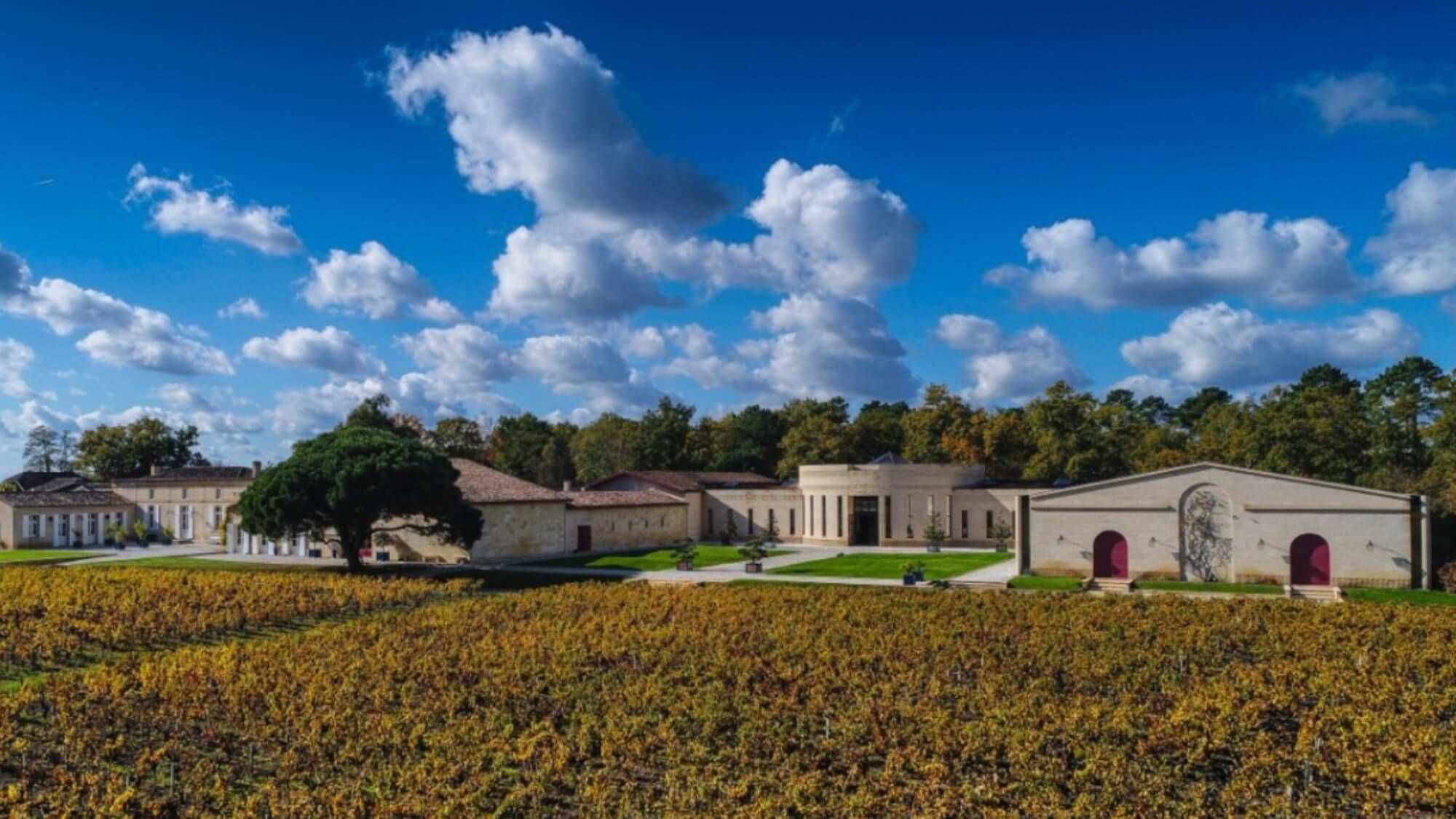
The journey towards organic farming is long and challenging
Chevalier began experimenting with organic cultivation as early as 2010, making efforts in HERBAL INFUSIONS, NATURAL DEFENCE AND ECOLOGICAL RESILIENCE, SEEDLINGS, PRECISION WORK, INFLUENCE OF THE FOREST, BEEKEEPER, ENERGY-POSITIVE CELLAR.
To Olivier, this is a complex process filled with unexpected challenges. He believes one shouldn’t rush into it without establishing a stable ecosystem with the surrounding environment.
After more than a decade of effort, Olivier felt that Chevalier’s grapes were almost ready. In 2021, they completed the organic certification for all their vineyards and embarked on a new challenge towards biodynamic farming.
This reminds me of the galloping horse on the 2022 commemorative wine label. It symbolizes a horse constantly challenging life and speeding up, representing the life creed of Domaine de Chevalier, Olivier, and his family.
I want to send my heartfelt wishes to Olivier, his wife Anne, and the young warriors Adrien and Hugo. May they overcome obstacles on the path to biodynamic farming, and may the Bernard family continue to gallop and soar in the world of wine like the spirited horse.
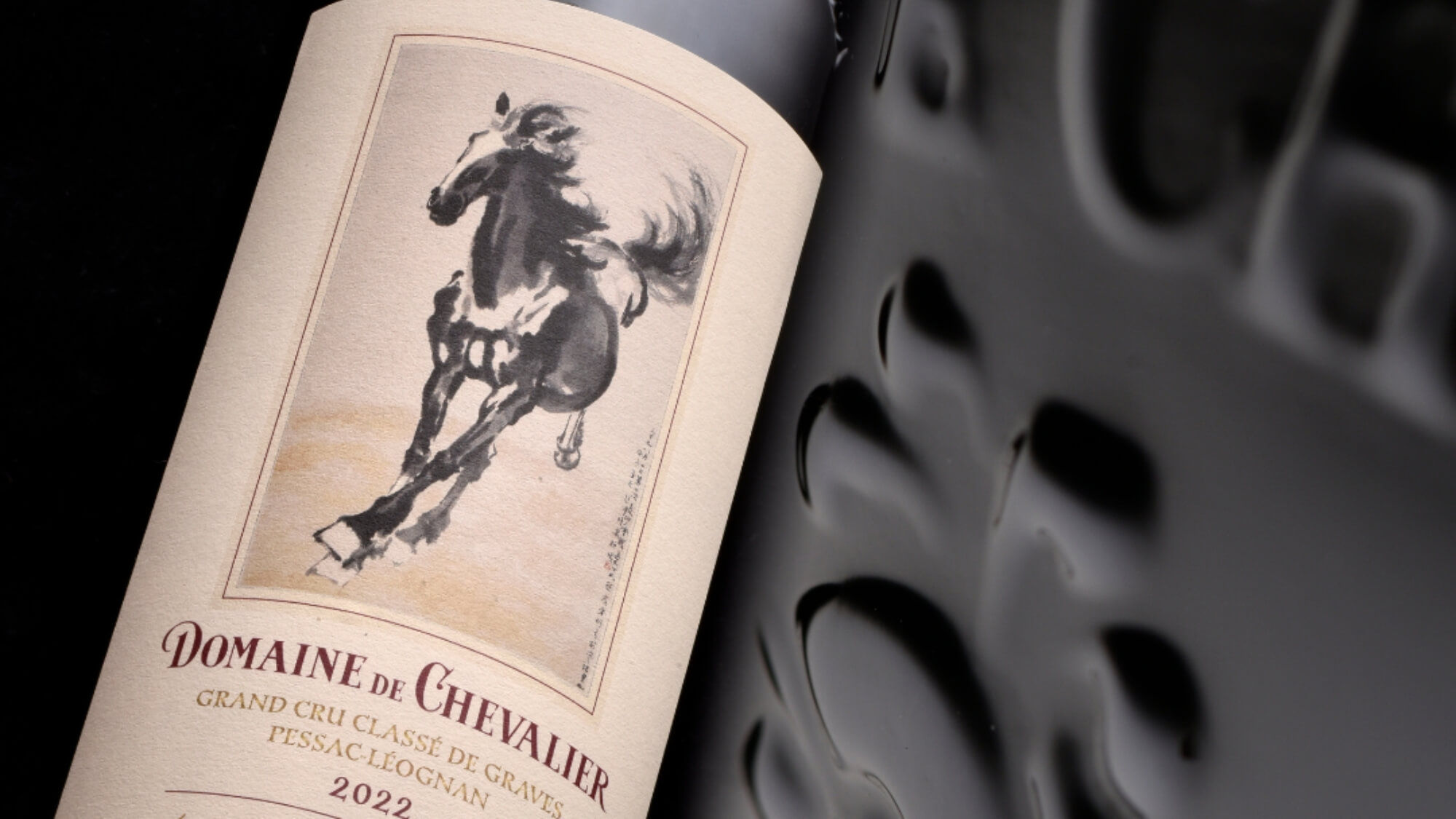
Tasting Chapter
The 40 vintages were arranged into four themes based on style:
- Les Délicats <Delicate>
- Les Raffinés <Refined>
- Les Classiques <Classic>
- Les Iconiques <Iconic>
Each containing ten vintages. Such a vertical tasting is a rare opportunity, and as usual, I stayed until the last one was tasted. Today, I want to share my renewed understanding of Chevalier.
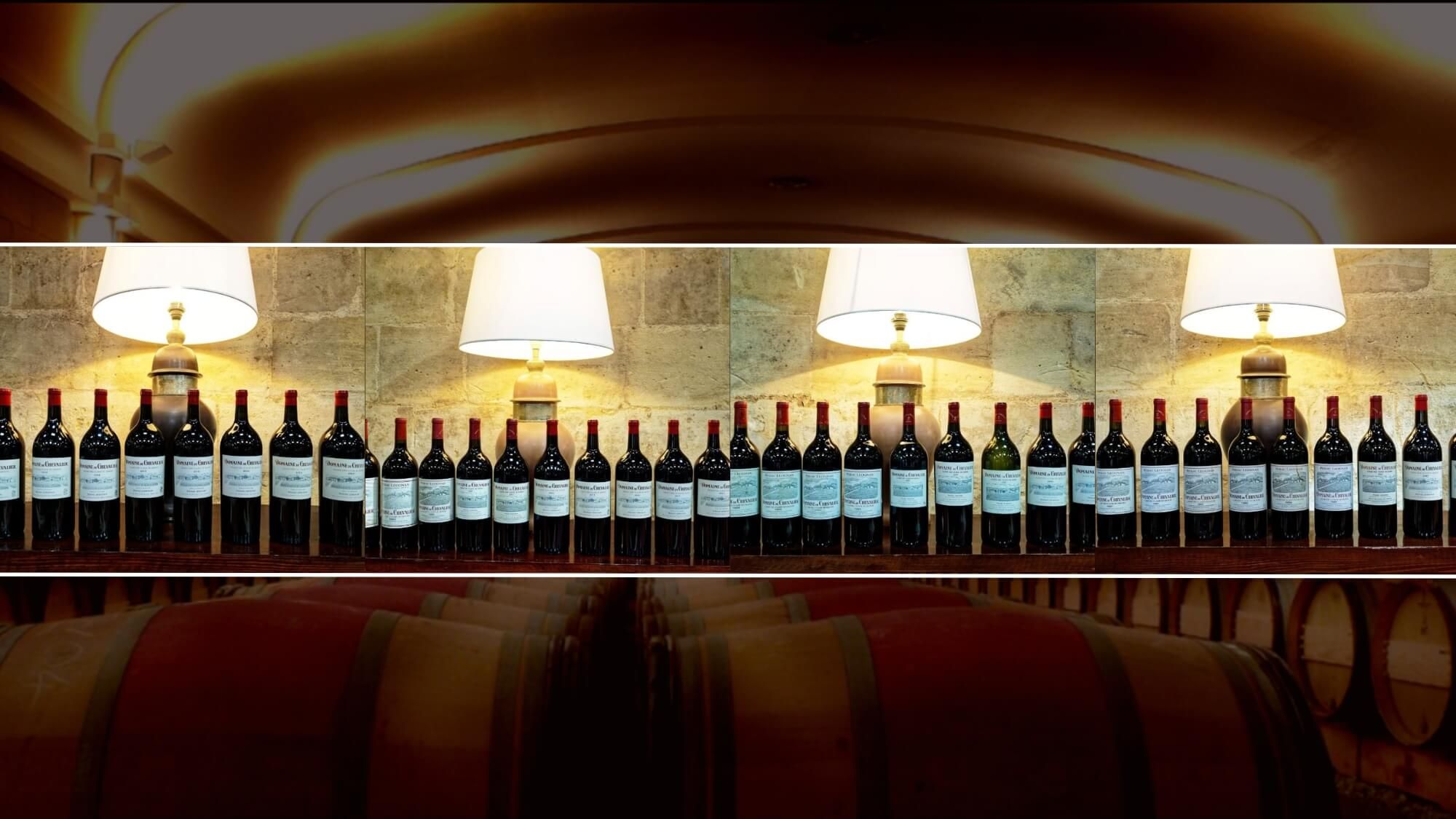
Firstly, the “Black sandy gravel soil” is the soul of Domaine de Chevalier. The sand gives it a round body, smooth taste, soft tannins, and fragrant aroma; the black organic matter provides various trace elements and relatively good water retention, enriching the structure while deepening the taste.
Secondly, Domaine de Chevalier performs exceptionally in dry vintages, like the hot and dry 2016, 2010, 1995, 1990 – these are the real showstoppers. Even in dry but not overly hot years like 2011, Chevalier’s terroir shines through, allowing me to sense the unusual approachability and amiability of this vintage.
Moreover, Domaine de Chevalier’s consistency is very strong. Post-2010 vintages maintain composure even in challenging years. The unexpected phenolic maturity in 2014, with at least 25 years of aging potential; The rare maturity in frost-affected 2017, beautifully conveying a “peaceful and serene” philosophy;
The underrated 2001, you find a maturity akin to hotter vintges, along with an elegance not typical in hot vintages.

Finally, regarding the Domaine de Chevalier of the 80s and 90s, I think they not only need good vintages but also sufficient winemaking experience. For good vintages like 1985 and 1986, it was more conservative. I prefer to recommend vintages like 1983, 1989, 1995, 1998, and 1999, especially the less famous 1983 and 1999, which gave me quite a surprise.
My friends know that I highly respect wines that are top-quality yet reasonably priced. In an era of soaring prices, vineyards like Domaine de Chevalier that maintain rationality are increasingly rare.
Olivier Bernard once said, “My wines are made for enthusiasts. I want everyone who loves Domaine de Chevalier can afford my wine.”
Considering Domaine de Chevalier’s remarkable progress over the past decade and its reasonable price in global markets, I strongly recommend wine lovers start collecting it now.
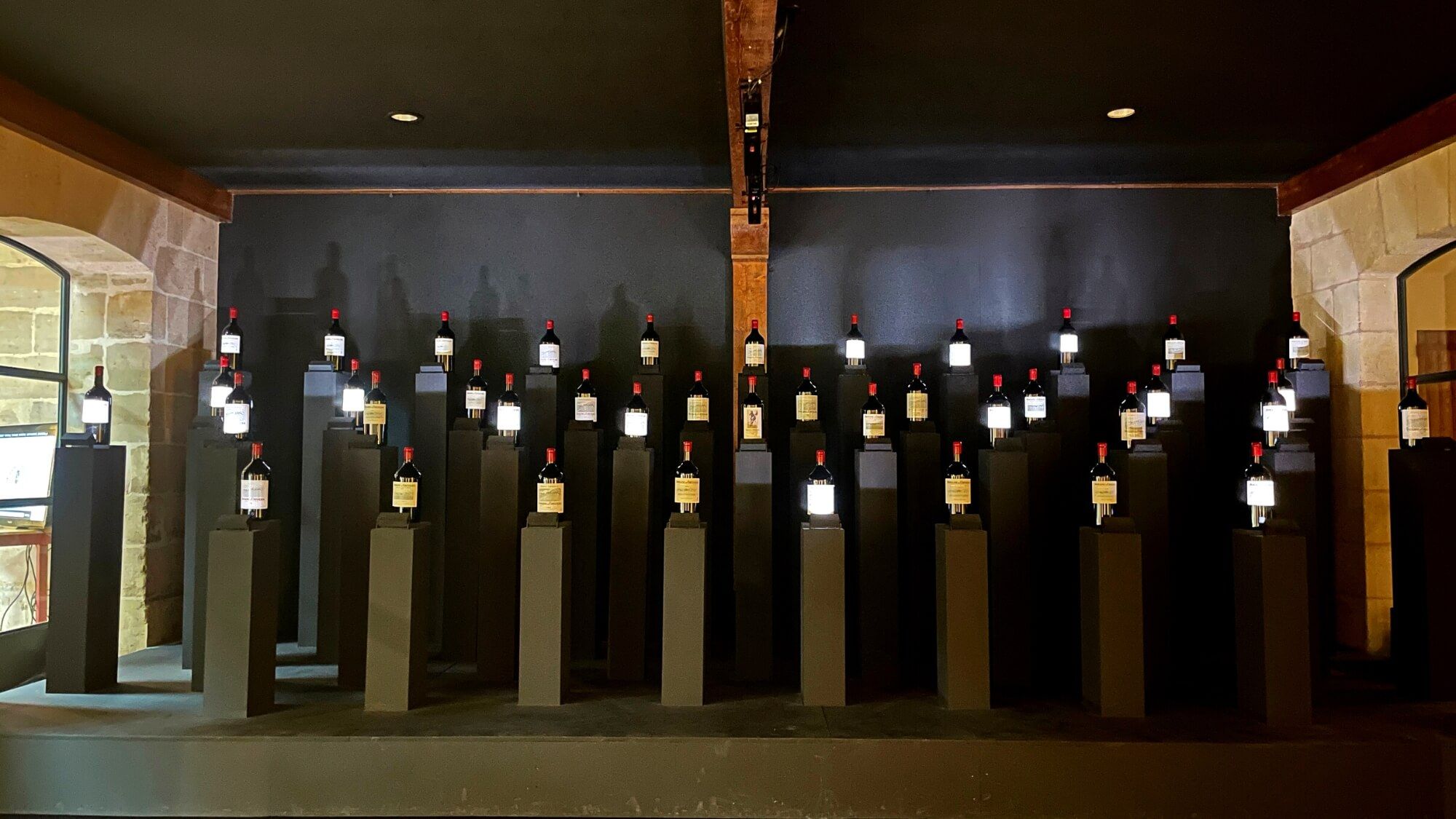
At the end of the article, you will find a timeline of Domaine de Chevalier’s achievements over the past 40 years, hoping it will be helpful to you.
- 1983: Purchase of the Domaine by the Bernard family. Olivier’s first harvest with Claude Ricard.
- 1984: Wedding of Olivier and Anne in the new white wine cellar at Chevalier.
- 1985: Birth of Adrien.
- 1986: Birth of “Bâtard Chevalier,” one of the world’s very first second white wines.
- 1987: Birth of Hugo. 1988: Memorable barrel tasting.
- 1989: Birth of our first “second red wine,” L’Esprit de Chevalier. It will be the definitive name for our second wine, both white and red.
- 1990: The last vintage followed by Professor Emile Peynaud.
- 1991: Historically devastating spring frosts on April 21… only 10 barrels of white wine produced! Construction of the new circular wine cellar and the double-aisle red wine barrel cellar.
- 1992: Very rainy August. Over 1000 hours of work per hectare to sort the whites, resulting in a very good vintage. 1993: The Domaine de la Solitude farming contract is entrusted to the Domaine de Chevalier by the Sainte Family. 1994: An early vintage disrupted by heavy showers during the harvest.
- 1995: Highly anticipated great vintage following the challenging vintages of 1991-1992-1993-1994.
- 1996: Creation of our organic effluent treatment station.
- 1997: Huge swarms of midges (drosophila) during the harvest…
- 1998: France wins the FIFA World Cup, and Chevalier produces a magnificent vintage for aging.
- 1999: Enormous storm on December 27. Forests are devastated.
- 2000: The beginning of the third millennium offers us a generous production for a great vintage.
- 2001: A wonderful wine in the shadow of 2000.
- 2002: Start of our collaboration with Stéphane Derenoncourt.
- 2003: Ban de Vendanges at Chevalier. The great August heatwave.
- 2004: Petit Verdot makes its appearance in the blend of Domaine de Chevalier’s Grand Vin.
- 2005: Perfect weather; the tractors stayed in the garage… a historic vintage.
- 2006: Participation in the purchase of Château Guiraud.
- 2007: A miracle vintage thanks to the Indian summer, with 40 consecutive days of sunshine and 130 days after flowering for the Cabernets.
- 2008: The latest harvest in Chevalier’s history, finishing the Cabernets on October 27!
- 2009: Farming takeover of the Bolleau family’s vineyard in Martillac. Its historical name, “Château Lespault-Martillac,” is restored.
- 2010: Drought under the clouds! Impressive result, one of Chevalier’s greatest vintages, born in a late harvest vintage.
- 2011: Inverted climate! Summer in spring and spring in summer! One of the driest vintages in Bordeaux’s history. The beginning of the beautiful adventure of Clos des Lunes in Sauternes.
- 2012: Construction of our bio and photovoltaic positive-energy logistics building of 1600 square meters.
- 2013: Le ban des vendanges at Domaine de Chevalier. Creation of a concrete vat room with oval-shaped tulip tanks.
- 2014: A very good vintage born from an abundant and late harvest.
- 2015: Creation of the wooden vat room with traditional-style new vats… Renewal of the farming contract for Domaine de la Solitude until 2056… Purchase of a portion of vineyard from Domaine de la Solitude.
- 2016: Development of organic and biodynamic practices on our properties. New engraved bottle.
- 2017: An early vintage, all harvests finish in September.
- 2018: First “100 points” for the Domaine de Chevalier 2018 red En Primeur!
- 2019: Major investments in three “Vermande” tractors, specifically for our commitment to organic farming. 2020: The Covid crisis and lockdown did not prevent us from producing a fabulous vintage. All our whites are certified organic.
- 2021: A cool spring with 10 nights of morning frost! All our reds are certified organic.
- 2022: In this hot and dry vintage, we produce one of the greatest wines of Domaine de Chevalier. To celebrate Olivier Bernard’s 40th vintage, Domaine de Chevalier asked permission from the descendants of Xu Beihong’s family for the use of a galloping horse portrait, which serves as the special label for the 2022 vintage.
